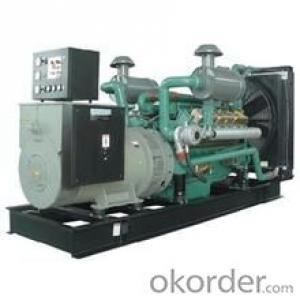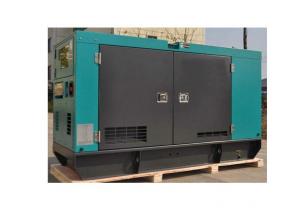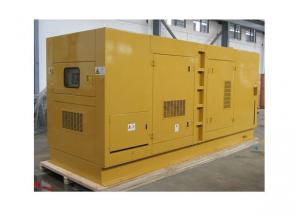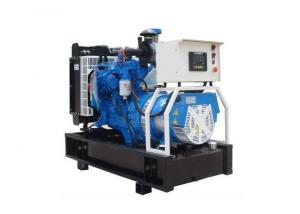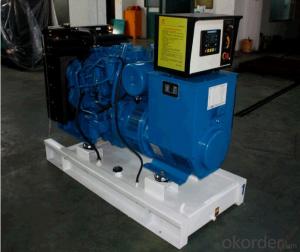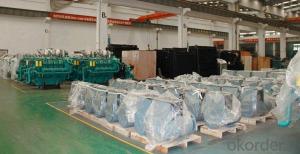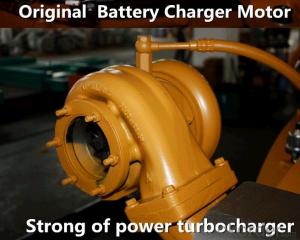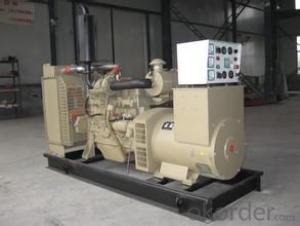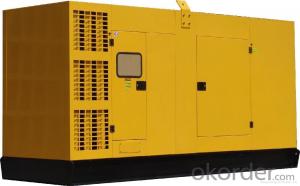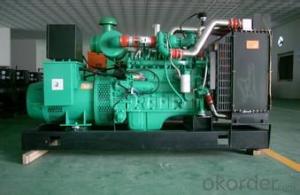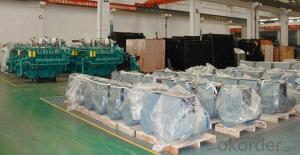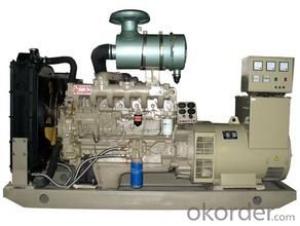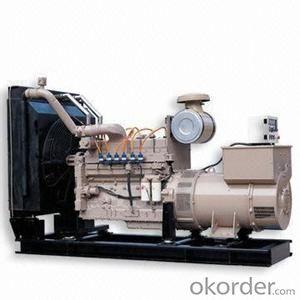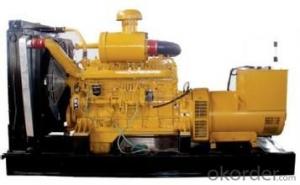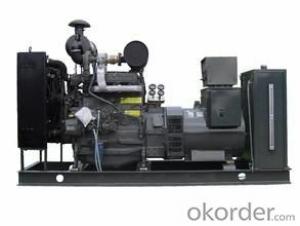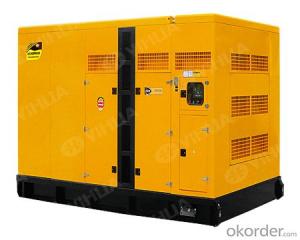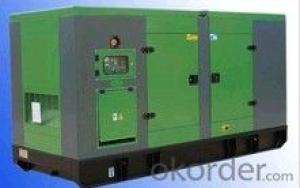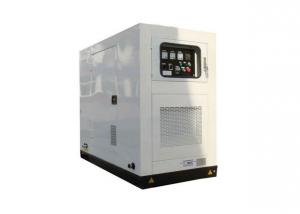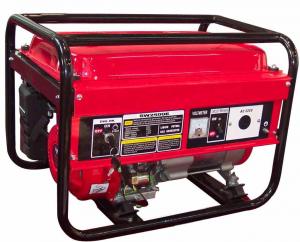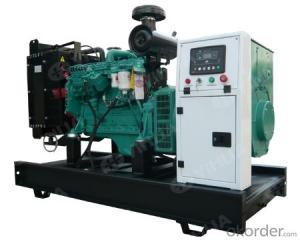Cummins Diesel Generator 500KW/625KVA C50
- Loading Port:
- Shanghai
- Payment Terms:
- TT OR LC
- Min Order Qty:
- 1 unit
- Supply Capability:
- 300 unit/month
OKorder Service Pledge
Quality Product, Order Online Tracking, Timely Delivery
OKorder Financial Service
Credit Rating, Credit Services, Credit Purchasing
You Might Also Like
| ENGINE DATA | |||||||
| Manufacturer: | Chongqing Cummins Engine | ||||||
| Model: | Original Cummins KTAA19-G6A, 4-cycle | ||||||
| Air Intake System: | Turbo, Water / Air Cooling | ||||||
| Fuel System: | Fuel Pump, EFC | ||||||
| Cylinder Arrangement: | 6 in line | ||||||
| Displacement: | 18.9L | ||||||
| Bore and Stroke: | 159X159(mm) | ||||||
| Compression Ratio: | 13:1 | ||||||
| Max. Standby Power at Rated RPM: | 610KW/830HP | ||||||
| Governor Type: | Electronic | ||||||
| Exhaust System | |||||||
| Exhaust Gas Flow: | 2054L/s | ||||||
| Exhaust Temperature: | 584℃ | ||||||
| Max Back Pressure: | 10kPa | ||||||
| Air Intake System | |||||||
| Max Intake Restriction: | 6.23kPa | ||||||
| Burning Capacity: | 750L/s | ||||||
| Fuel System | |||||||
| 100%(Prime Power) Load Consumption: | 206 g/Kw.h | ||||||
| 75%(Prime Power) Load Consumption: | 205 g/Kw.h | ||||||
| 50%(Prime Power) Load Consumption: | 206 g/Kw.h | ||||||
| Oil System | |||||||
| Total Oil Capacity: | 50L | ||||||
| Oil Pressure at Rated RPM: | 345-483kPa | ||||||
| Cooling System | |||||||
| Total Coolant Capacity: | 116.5L | ||||||
| Thermostat: | 82-93℃ | ||||||
| Max Water Temperature: | 104℃ | ||||||
| ALTERNATOR DATA | |||||||
| Manufacturer: | Original STAMFORD ,Marathon,MECC,Kaijieli | ||||||
| Frequency and Speed: | 50Hz/1500rpm | ||||||
| Altitude: | ≤1000m | ||||||
| Connecting Type: | 3 Phase and 4 Wires, “Y” Type Connecting | ||||||
| Power Factor: | 0.8 | ||||||
| Protection Grade: | IP23 | ||||||
| Exciter Type: | Brushless, Self-Exciting, with AVR | ||||||
| Insulation Class, Temperature Rise: | H/H | ||||||
| GENERATING SET DATA | |||||||
| Voltage Regulation, Stead State: | ≤±1% | ||||||
| Volts Warp(Sudden Reduce): | ≤+25% | ||||||
| Volts Warp(Sudden Increase): | ≤-20% | ||||||
| Frequency Regulation, Stead State: | ≤5% | ||||||
| Frequency Warp(Sudden Reduce): | ≤+12% | ||||||
| Frequency Warp(Sudden Increase): | ≤-10% | ||||||
| Frequency Recovery Time: | ≤5S | ||||||
| Open Type Size: | 3700(mm)X1570(mm)X2080(mm) | ||||||
| Open Type Weight: | 4820kg | ||||||
| Control System: | Original Uk deep sea auto controller | ||||||
| Standards: | ISO9001, ISO14001, European CE | ||||||
- Q: An internal combustion engine runs more efficiently at constant speed. If it was run to charge the batteries when needed, via a generator, it seems to me it would be much more efficient than today's dual mode hybrids. This is essentially what diesel-electric locomotives do, and they get much better gas mileage than cars.
- When there are changes in the electrical load on a generator then the power required to drive the generator also changes. So the gas engine wouldn't run efficiently at a constant speed unless the car runs at a constant speed. Diesel electric locomotives usually run at a constant speed. They don't stop and go as often as a car does so the diesel electric configuration works. Listen to a train that is accelerating and you will hear the change in engine pitch due to the higher energy demand.
- Q: I need to run a fridge on a small power generator that don't have enough staring power to run it , would adding a huge industrial capacitor make it possible ?
- No the capacitor will not make it possible. The fridge needs to run on a certain amount of power and your generator gives off a certain amount of power. This means that the generator only provides a certain amount of energy for certain amount of time where is the fridge needs more. The only way to make up that difference is to increase the amount of energy generation per unit time. Capacitors themselves don't produce any energies they just store it releases suddenly therefore it may be able to start the fridge for a little bit but it won't be able to continuously run it. Also don't try this, because if you power a compressor on short cycles, this is the fastest way to destroy a compressor. You just need a bigger generator.
- Q: i have a 7.5 onam diesel generator that runs for 15 min and shuts down i get a code 33 (overheating)I change coolant,cap and thermostat also checked air flow Still no luck.any ideas anyone
- If it has a waterpump you might need to change that.
- Q: hi , can anyone give me the DG a,b,c,d checks details and schedule like a chart or something
- Hi It is the same as a gas engine to maintain. Except for the fuel has to be water free. There will be a bowl some where to empty the water. Changing the oil etc. depends on how much you use it.
- Q: I recently purchased a CAT turbo diesel generator. I checked the oil and it had water in it. After a good bit of clear water came out the oil started to drain. It could best be described as the color and consistency of a vanilla milk shake. I was told by a friend to mix some diesel with the oil and agitate it to mix it up, then to drain the oil. After the system was clear, i put fresh oil in until it reached the fill line. I started up the engine and let it run for about two hours. It was smoking white from the exhaust stack. I have also noticed that there is oil dripping from the exhaust stack. There also seems to be oil leaking from the turbo. Could this oil leak be causing the white smoke? I remained curious so i grabbed an infrared thermometer and started checking around. The exhaust manifold around the number 1 cylinder was about 100 degrees cooler than the other 3 cylinders. What the heck is going on? help would be much appreciated!
- you are getting water in the combustion chamber you have a leaking head gasket or blown head gasket or a cracked head smoke coming from exhaust that is white is actual steam from 1 one cylinder there is where you problem lies and my be a bad turbo oil leaking from it and exhaust
- Q: Hello im going to be a mechanic and i will have a 1998 turbo diesel H1 Hummer. Now I wanted to know since the hummer is not like a bus or a really heavy Diesel equipment that i can work on it myself like a regular car or do i have to have to be a diesel mechanic to even work on it?
- Diesel engines are very similar to gasoline engines. If you have the technical knowledge to work on gasoline engines then the same principles applies to diesel engines as well. I know this is true because I took the course for auto/diesel automotive technician certification. I rebuilt them both along with carburetors, transmissions, starters, alternators, and generators. The only difference I can recall are that the diesel engines required more or less air than the gasoline engines. Of course diesel fuels burns much slower than gasoline. Therefore diesel engines might have additional mechanisms to produce or reduce the quantity of air. That is all.
- Q: I have been trying to research the specifics of utilidor functionality for nearly two weeks and have come up with hardly any information. What I'm wanting to know is, at certain access points of utilidors in artic areas, is there something above ground that powers the tunneling below like possibly a transformer or a generator? I know it seems unfeasible to have either one out in the open to be exposed to the elements but I still want to know. And also even if this isn't the case now, was it so when the tunnel systems were first made?
- What the hell is a utildor?
- Q: can't those nuclear material in japan be kept inside a container that is not affected by it like lead?or shifted to an isolated location.
- When an earthquake strikes a reactor, it detects and stops working. Due to continuous heating in the reactor, it needs to be cooled down. This is done by electricity-run generators. But due to power crisis aftermath the tsunami, these generators failed. Then diesel generators took their place. These too failed to work. And at the end, battery-run generators were applied. These also turned ineffective. Now no measure can be used to cool down the reactors. Reactors will probably blast due to heating up and radioactive material will spread in the sky. Sorry, but your suggestion is not easy to apply.
- Q: hiam in the process of purchasing a flat.under the electrical specifications, the builder has specifid the following. please explain me what does it mean by3 phase power supply with automatic change over switch and what does it mean by RMU Transformer with Advanced Features
- This electrical specification describes some aspects of the electrical distribution system for a block of flats (apartment building in USA terms). A 3 phase power supply is 3 live wires and a neutral with 400 volts or so between any two live wires and 230 volts or so between any live wire and the neutral. Each flat would be connected to one live wire and neutral. A change over switch is a switch that can switch the load from one power source to another. It could switch between two mains connections from the power company or it could switch between the power company mains and a standby diesel generator set. An RMU transformer is a ring main unit transformer. The transformer would be the step down or substation transformer from the transmission line voltage to the 400 volt level. There would probably be one transformer for all of the flats, possibly two if there are two mains connections from the power company. The RMU designation indicates that the transformer includes additional components such as the change over switch and main circuit breaker as a single piece of equipment. Advanced features might include such things as transformer temperature monitoring, load monitoring, and remote indication provisions. Unless the features are enumerated, it isn't a particularly useful description. It may or may not include features in addition to the minimum required by government regulations. If you are purchasing only an individual flat, this might offer some assurance that the electrical system is modern and reliable, but it is a very poor description to offer prospective purchasers of individual flats.
- Q: Hi I'm going to start up an emergency AC generator driven by Diesel engine that generate 220+ VOLTS but I don't know what are the procedure to start up of an AC generatorand also what are the procedure to STOP the generator. please help :)
- Is this generator going to be used in a location which is normally served by grid power. If so is it proposed to use the distribution system normally used when on the grid? If the answer to these questions is yes. The first step is to isolate the normal energy source. This has two purposes. a) to protect your equipment when power is restored and b) to protect people and equipment working on the external circuit. Once this is isolated wire the generator into the circuit (closing isolating switch if hard wired). Start the generator using normal procedures with minimal load in place. Slowly increase load until desired effect is achieved. When external power is returned. Slowly reduce load and isolate generator. Restore normal grid connection. Shut off generator.
Send your message to us
Cummins Diesel Generator 500KW/625KVA C50
- Loading Port:
- Shanghai
- Payment Terms:
- TT OR LC
- Min Order Qty:
- 1 unit
- Supply Capability:
- 300 unit/month
OKorder Service Pledge
Quality Product, Order Online Tracking, Timely Delivery
OKorder Financial Service
Credit Rating, Credit Services, Credit Purchasing
Similar products
Hot products
Hot Searches
Related keywords
